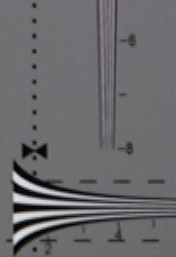Are AVCHD camcorders the next HD lie?

When I wrote "Don’t believe the low bit-rate ‘HD’ lie" with a comparison, I had no idea that these compromises in quality would apply to the latest consumer HD camcorder format called AVCHD as well. When I first read about the AVCHD format with its use of MPEG4-AVC (H.264) video compression at a maximum of 24 mbps versus HDV which uses the older MPEG-2 format at 25 mbps, I was very excited about the new format. My enthusiasm dampened when I read the fine print that actual AVCHD implementation only uses 13 to 17 mbps MPEG4-AVC for compatibility with cheaper storage devices and it completely sunk when I read this excellent in-depth review from camcorderinfo.com. Take a look at the screenshots below and it pains me to see how much detail is lost in the newer HD format.
| Comparison of HDV versus AVCHD Image credit: camcorderinfo.com. Lossless 1:1 crop. | |
 | |
| Canon HG10 Bitrate: 13 to 15 Mbps MPEG4-AVC aka H.264 AVCHD camcorder format 1920x1080 60i | Canon HV20 Bitrate: 24 Mbps MPEG-2 aka H.262 HDV camcorder format 1440x1080 60i (anamorphic) |
It's gotten so bad that I've seen whitepapers from vendors that try to push the idea that 4 to 6 mbps using MPEG4-AVC H.264 is equivalent to 18 mbps broadcast MPEG-2 HD video. The problem is that these loose definitions of "equivalent" only compares perceived level of artifacts and not the loss of detail. Now I'm perfectly willing to acknowledge that the above comparison may be partially attributed to a poor implementation of H.264 video compression, but the bitrate has to be a huge deciding factor. The article from camcorderinfo.com also seems to suggest that they haven't found a single AVCHD camcorder that doesn't have low detail.
AVCHD is the second consumer HD camcorder format designed for DVD, Hard Drive, or SDHC flash memory recording designed as an alternative to the older HDV format which usually records to miniDV tape. Because DVDs and flash drives are often capacity and write-throughput constrained, AVCHD camcorder makers have typically stuck with 13 to 15 mbps bitrates. While Class 4 SDHC flash cards have write throughput of 32 mbps, cheaper Class 2 SDHC flash cards have a write throughput of 16 mbps and the camcorder makers don't want to exclude Class 2 SDHC flash cards. Longer recording times on 8 or 16 GB flash cards obviously played in to the decision process.
It would seem logical that camcorder companies like should offer a max quality mode but perhaps they're gambling on the fact that most consumers will never know the difference. This is really a shame since AVCHD random access storage is a much friendlier consumer format with drag-n-drop simplicity when transferring videos to the PC. You simply put the SDHC in to your card reader on your computer or you hook up a USB 2.0 cable to the camcorder and you merely drag the files to your computer between 30 to 200 mbps.
With HDV, you have to deal with the hassles of something like Windows Vista Movie Maker which forces you to rewind the tape to the beginning and stream the video over in real-time at a fixed 30 mbps. Buying an alternative video editing package will at least let you pick and choose what you want to record, but it doesn't solve the speed problem. The other problem with miniDV is that it's very hard to preview what you've shot since you have to rewind the tape. Sometimes if you don't put the tape in the right position, you can accidentally wipe valuable footage. It's really a shame that AVCHD camcorder makers have botched the implementation because the format has real potential in the consumer market.
Note: JVC seems to at least be avoiding the low-bitrate pitfall with their hard drive based models like the GZ-HD7 which offers a high-bitrate MPEG-2 format. This is essentially an HDV format for hard drive instead of a miniDV tape and the 60 GB hard drive provides approximately 4 hours of recording versus one hour on miniDV tapes. This seems to be a good compromise since you get high-bitrate HDV format with the benefit of random access storage and fast drag-n-drop video transfers. Camcorderinfo.com reviewed the GZ-HD7 here with quality lower than the best HDV camcorders but better quality than AVCHD camcorders. While the recording format was better, the low light performance wasn't great.
One saving grace that's less applicable to the consumer space is the HDMI output on newer AVCHD camcorders. For small independent filmmakers, they can hook up a computer with a $250 HDMI capture card with very fast RAID storage capable of 1.5 to 3 gigabits per second and capture raw uncompressed HD video. In this application, the recording format in the camera is irrelevant since the PC records the video uncompressed. But when you're shooting at this level of quality, you're probably going to use a much more expensive camcorder than a cheap $1000 consumer variety. The kind of HD video quality you get these days with relatively cheap equipment is unparalleled in the history of the video industry. High quality video equipment is no longer cost prohibitive to independent filmmakers and the only thing that limits quality is imagination and talent.